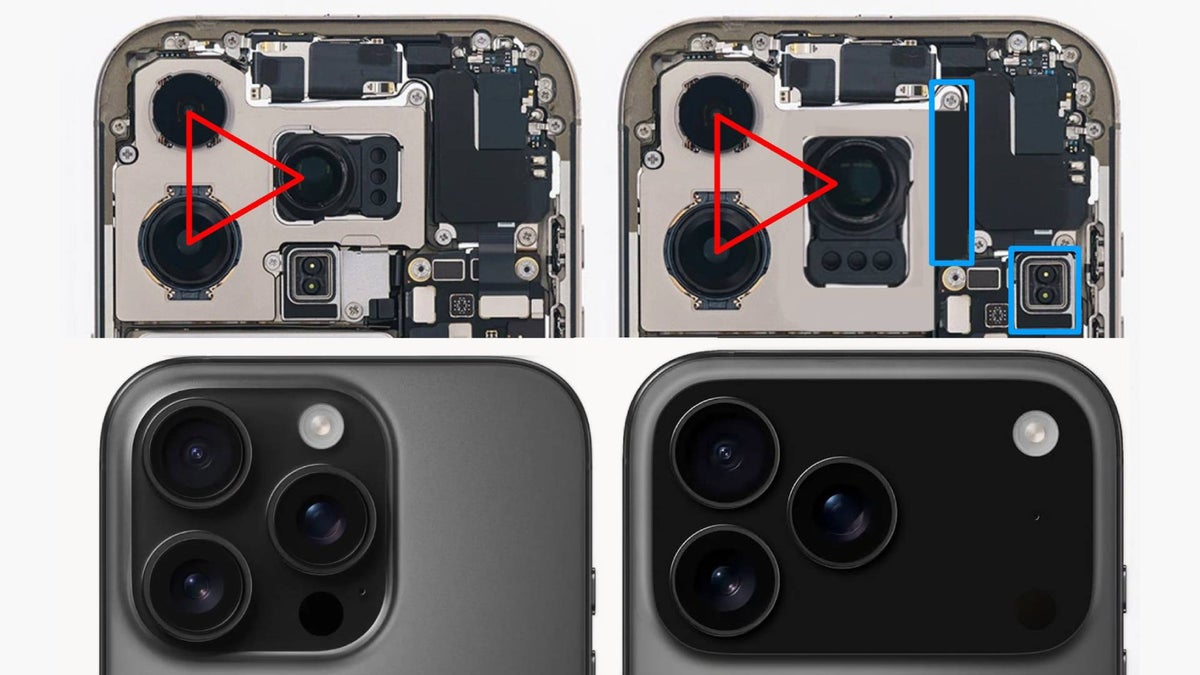The best YouTube cameras in 2025: our favorite content creation tools!
We pick the best YouTube cameras for indoor presenting, travel vlogging, adventurous thrill-seekers, and more

Finding the perfect camera for YouTube isn’t a one-size-fits-all choice. The best option depends on the type of content you create and the style of your channel. That’s why I’ve put together a detailed guide showcasing a range of cameras to suit different needs, shooting styles, and budgets.
Our selection includes everything from compact all-in-one models and versatile mirrorless cameras to high-end cinema rigs and rugged action cams for adventure enthusiasts. Not sure where to begin? Scroll to the bottom of the page for expert tips on selecting the ideal camera for your YouTube channel.
Every camera on this list has been personally tested, ensuring they’re among the top choices for YouTubers today. Whether you're vlogging, filming tutorials, or crafting cinematic productions, there's a perfect fit for you. And if you prefer shooting with a smartphone, don’t miss our separate guide on the best phones for video.
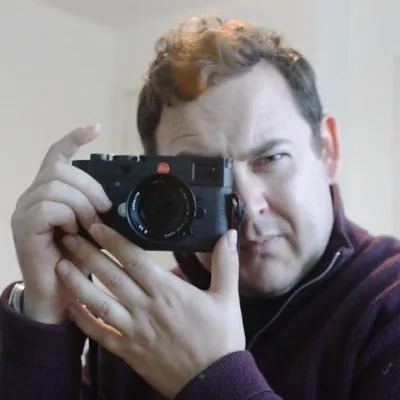
For nearly two decades Sebastian's work has been published internationally. He has been taking photographs since the days of film, but is also keenly interested in video, having used many cinema cameras from the likes of Sony, RED, ARRI, and everything in between. He brings this expertise to picking out the best cameras for YouTube.
The Quick List
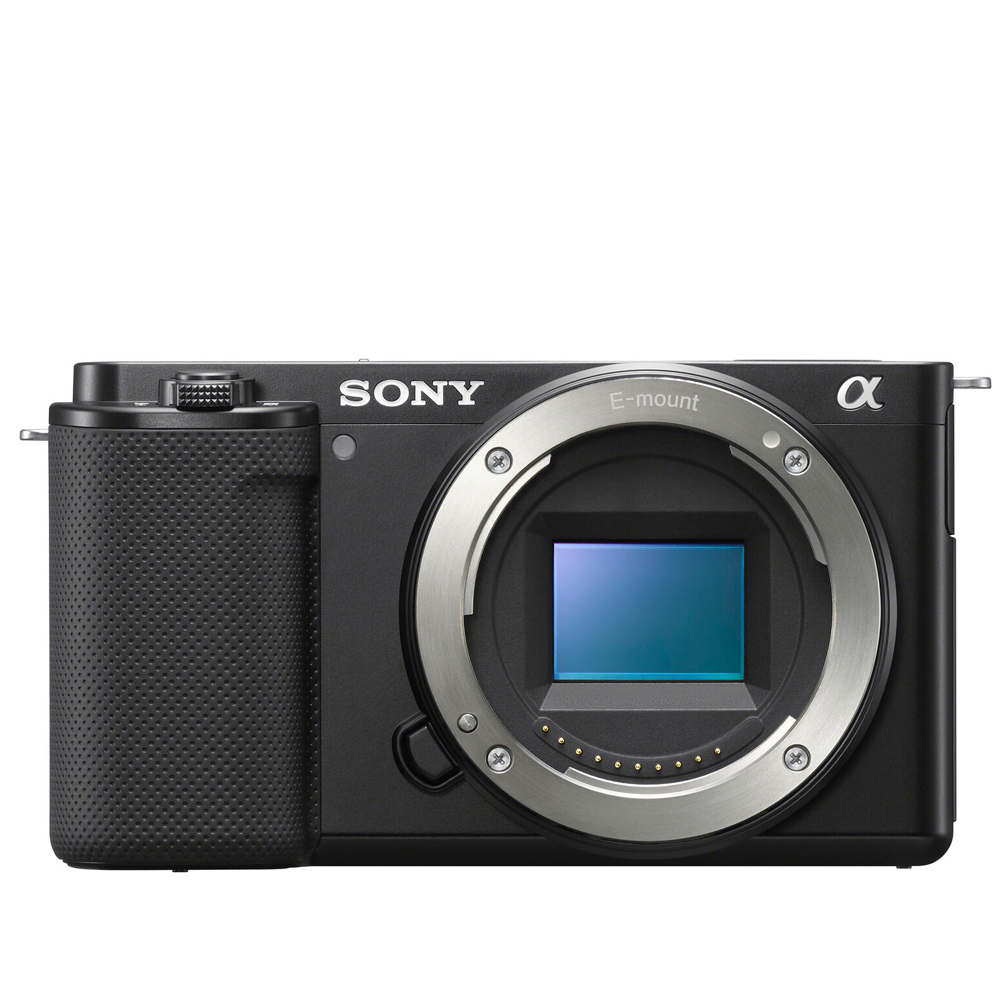
I have put a few ZV vlogging cameras on this list, which reflects how good they are and how big this market has become. The ZV-E10 II sits as the cheapest interchangeable lens ZV camera, which allows a bit more creative freedom with lens choices, than its fixed lens siblings.
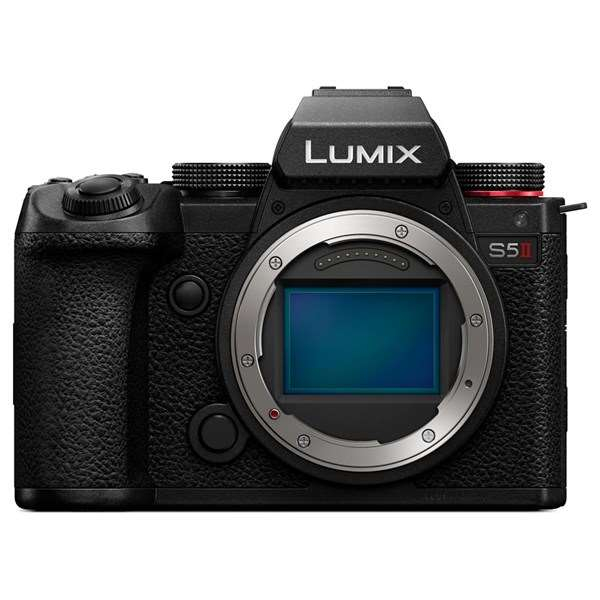
Mirrorless cameras are the most popular choice for serious video shooting – offering you an interchangeable lens system that means you can pick the right lens for what you are shooting.
Read more below
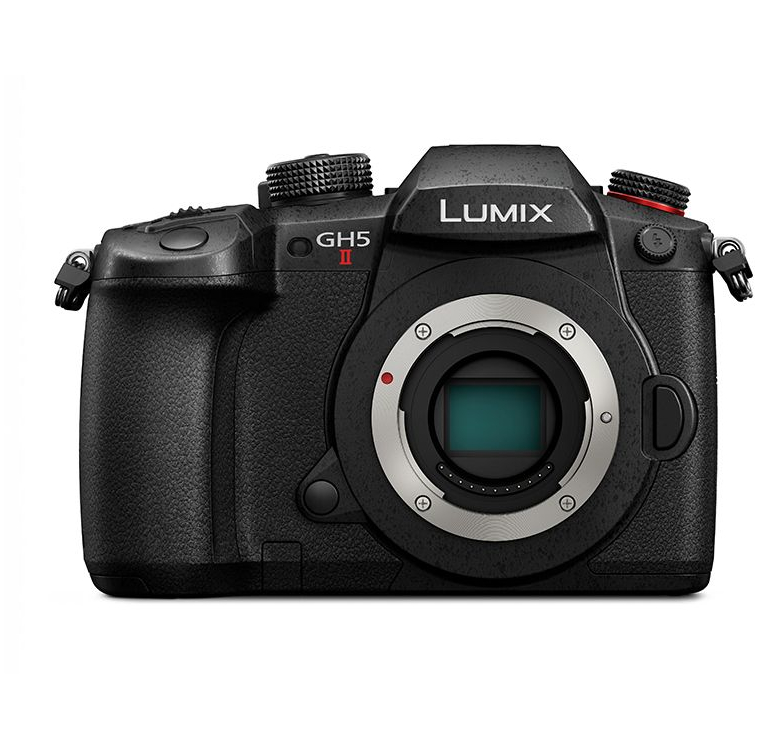
The GH5 II is a mirrorless camera that incorporates a raft of video-centric features, and is more affordable than more recent Panasonic releases.
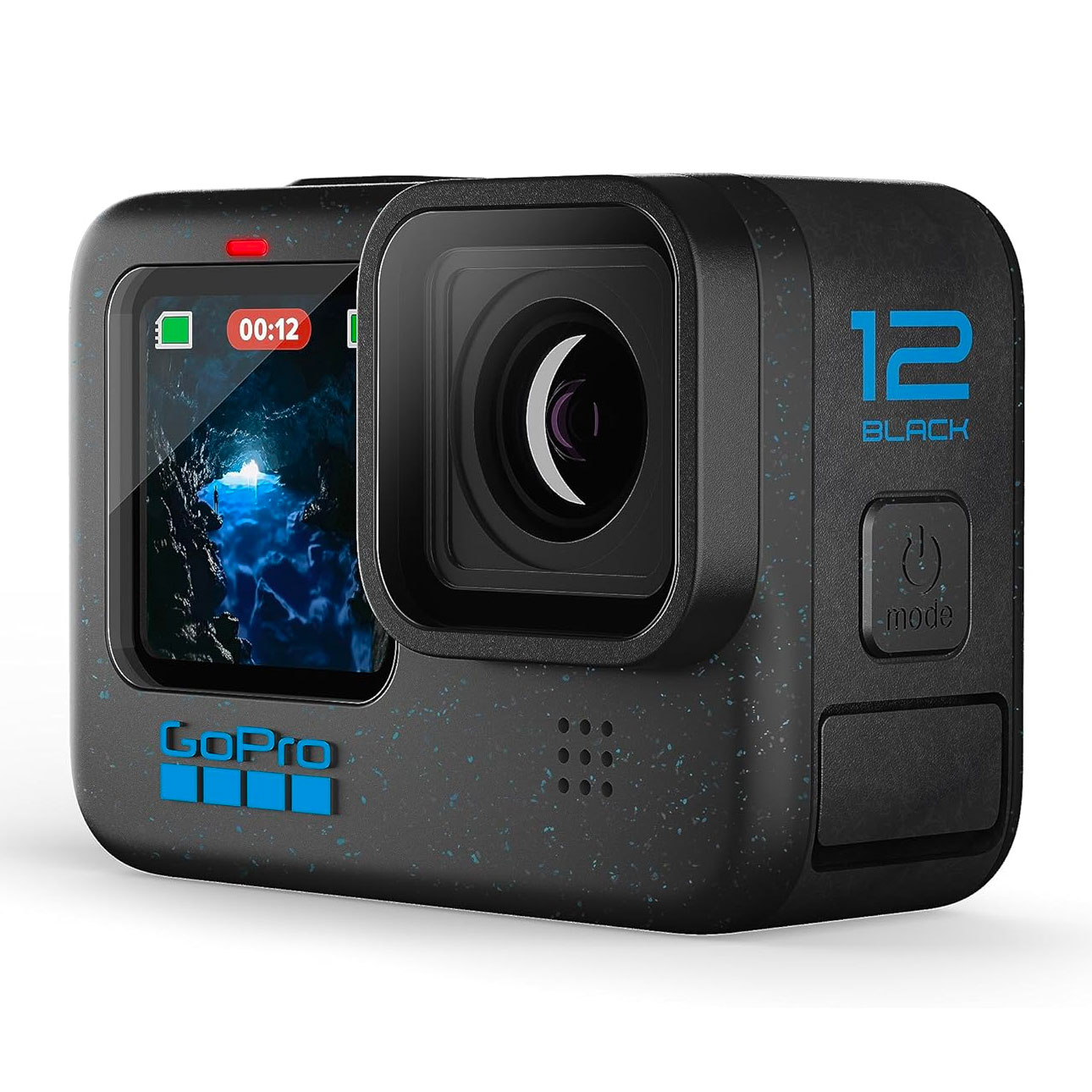
With a versatile sensor, the Hero 12 Black can shoot in an 8:7 ratio – perfect vertical video. Elsewhere, it's got all the GoPro quality we've learned to love.
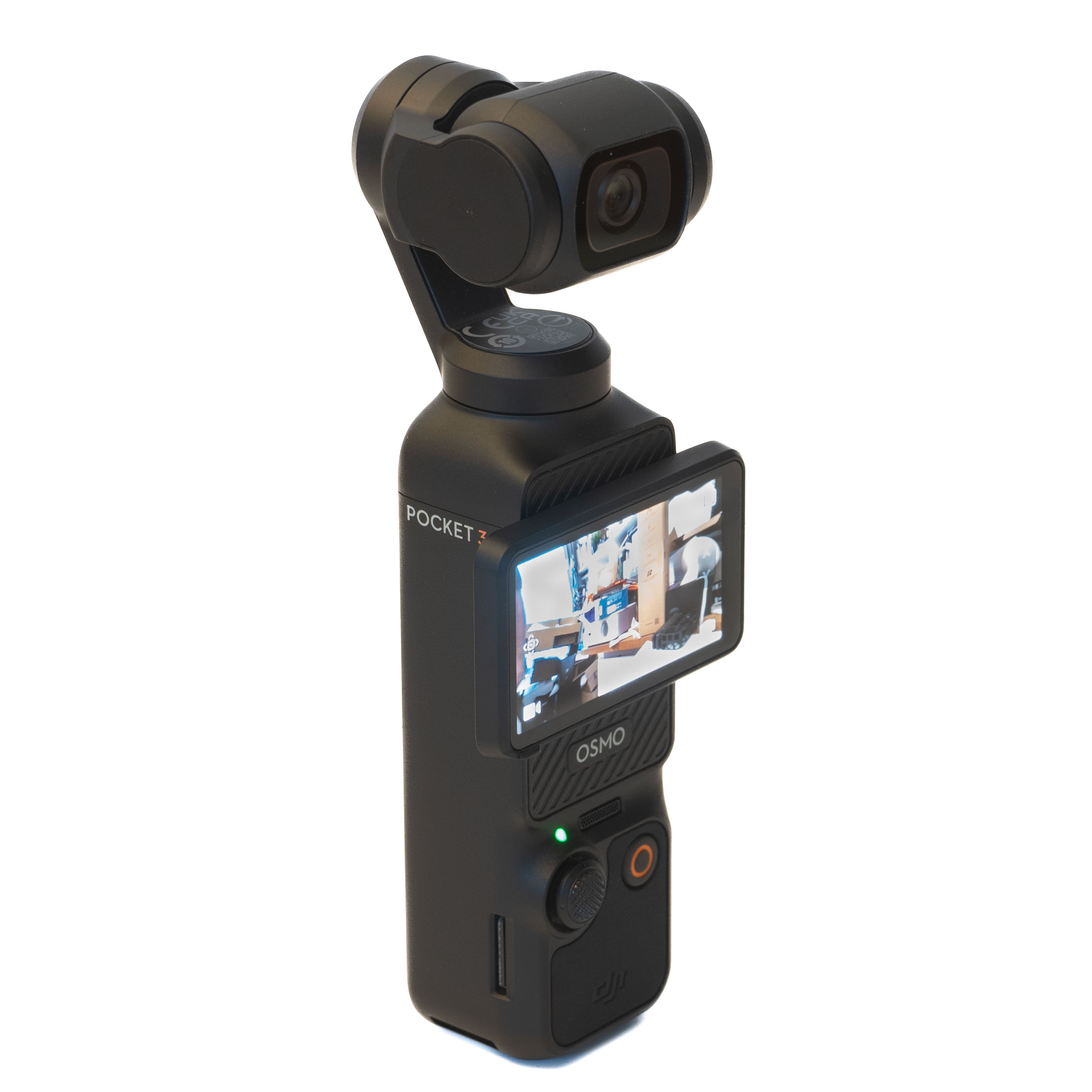
DJI has refined its gimbal camera formula, and the Osmo Pocket 3 is the best yet. With a larger screen and sensor, it's easier to operate and produces better results.
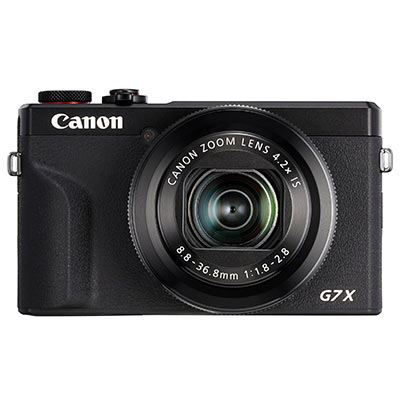
A YouTuber perennial, Canon's popular PowerShot G7 X Mark III compact is an all-in-one package for videos and streaming alike, with a mic input and uncropped 4K.
Load the next products ↴
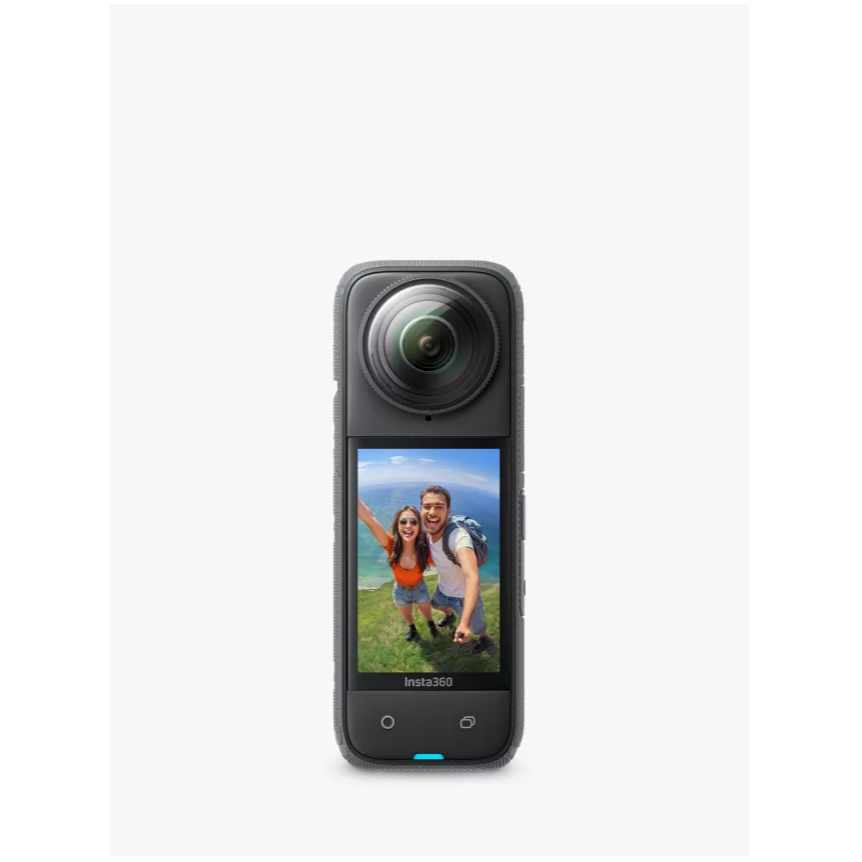
This is an 8K 360-degree camera, which lets you see everywhere and aim the shot later. That's amazing for action. It's also an great 4K action camera (two of them), and very rugged.
For
- Slim, pocket-sized dimensions
- Really easy to use
- Bigger touchscreen
- 4K Single Lens action cam mode
- Shot Lab feature for the adventurous
Against
- 5.7K doesn’t go far when you reframe video
- Active HDR can look washed out
The best YouTube cameras
Why you can trust Digital Camera World
Best for vloggers
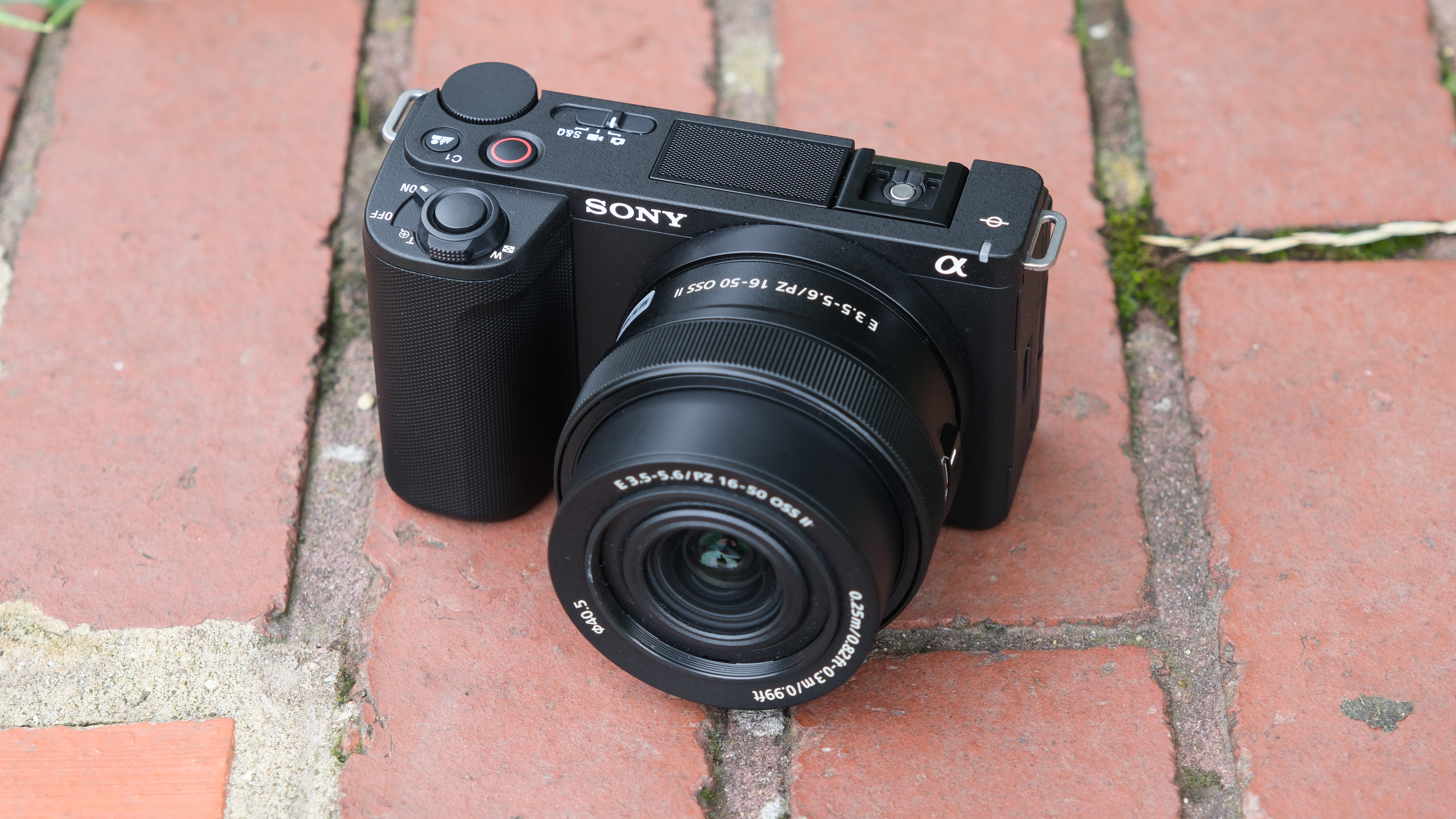
Specifications
Reasons to buy
Reasons to avoid
✅ You like the idea of changing lenses: Sony's other affordable ZV cameras all have fixed lenses, the ZV-E10 II gives the option to make your footage stand out a little more with one of the hundreds of E-mount lenses available.
✅ You want great audio without a separate mic: the built-in audio in the ZV-E10 II is way beyond other cameras and rivals a decent external mic.
❌ You want a very simple camera: while the ZV-E10 II is not complex, it isn't as easy to use as other Sony cameras like the ZV-1F or ZV-1 II.
❌ You want more of a hybrid camera: you'll get some decent photos here, but the viewfinder and more photo-focused controls on Sony's a6xxx range are a better hybrid experience.
The Sony ZV-E10 II is first-and-foremost a vlogging and content creation camera aimed at video. A big upgrade from the first version, it improves on every criticism of Sony's menus and video from the first model, now with next to no crop on footage and easy-to-use touch menus.
It packs a large and well-performing internal microphone (with clip-on muffler) and offers some very good 4K video. For serious video makers, you won't find any complex oversampling or multiple codec recording options here. This camera is for anyone who is taking their video a little more seriously than recording on a phone but isn't quite ready or willing to jump into a more professional level of videography.
The ZV-E10 II is not going to be a first-choice photography camera, as it lacks the EVF that photographers would expect, however, with the same sensor and processor as the Sony a6700, its specs are decent enough. If you are looking for something more hybrid, then cheaper cameras in the Sony A6xxx series (a6000 or a6400) are a better, although aging, option.
The ZV-E10 fits in an APS-C sensor, which means it is able to make use of Sony's extensive range of E-mount lenses. However, due to its very compact body, the camera does not balance well with larger Sony lenses, but Sony has a good range of quality smaller optics, as well as a huge number of third-party lens options. The body also features an articulating touchscreen which is vital for vlogging from low or awkward angles.
The ZV-E10 II has a very appealing price tag, it's a shame that there is no in-body image stabilization, but for a very specific audience looking for the perfect balance between affordability and features, this camera hits the nail on the head.
Read our full Sony ZV-E10 II review for more details
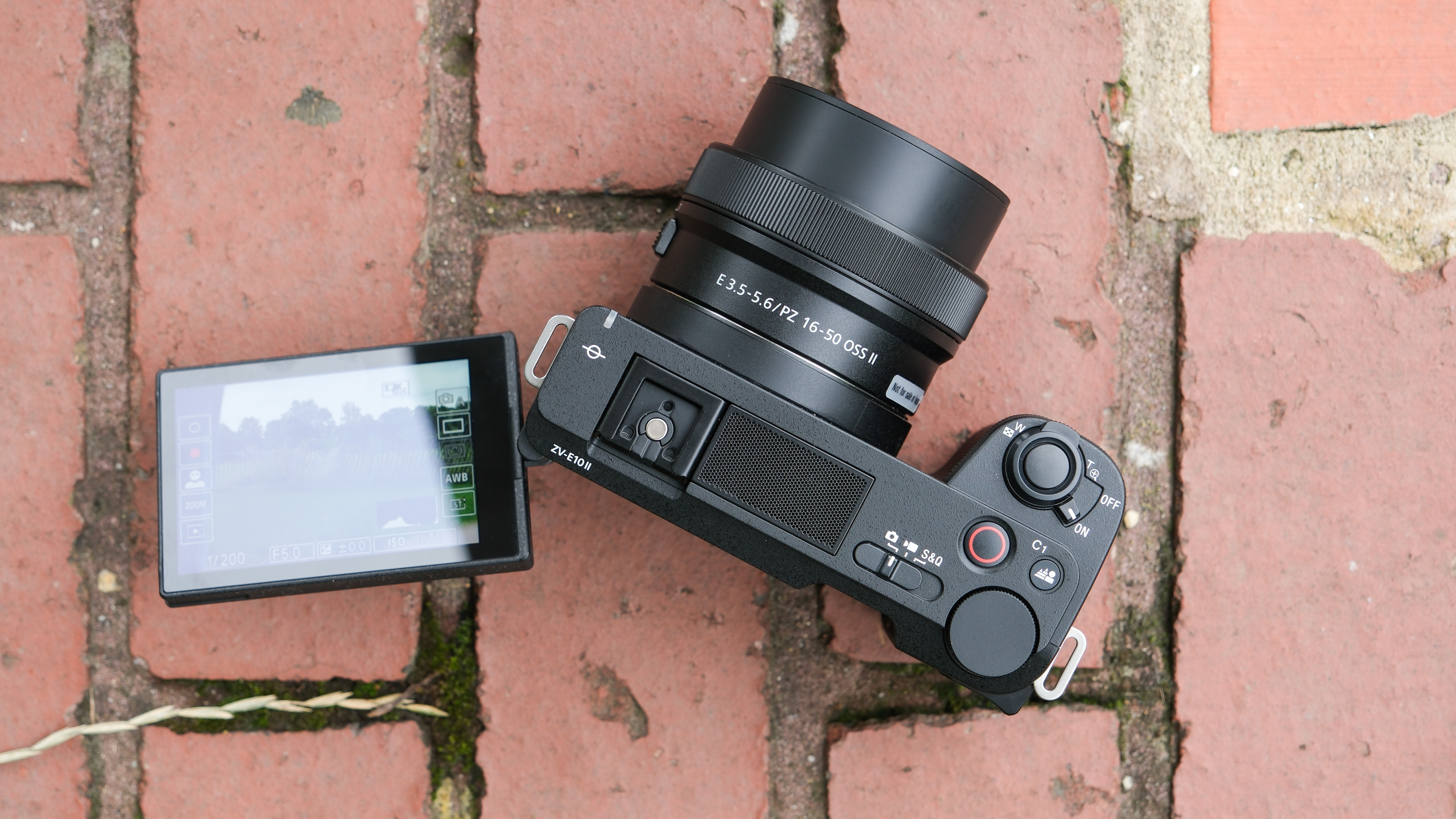
Features | offering a compact body with 4K video and excellent built-in microphone makes it the perfect all-rounder for YouTube | 4 / 5 |
Performance | it performs extremely well for a video camera, but might not be your first choice it you want a good stills camera too | 4 / 5 |
Value | a little pricey, but worth it for the versatility it offering in a compact package | 4.5 / 5 |
Best overall
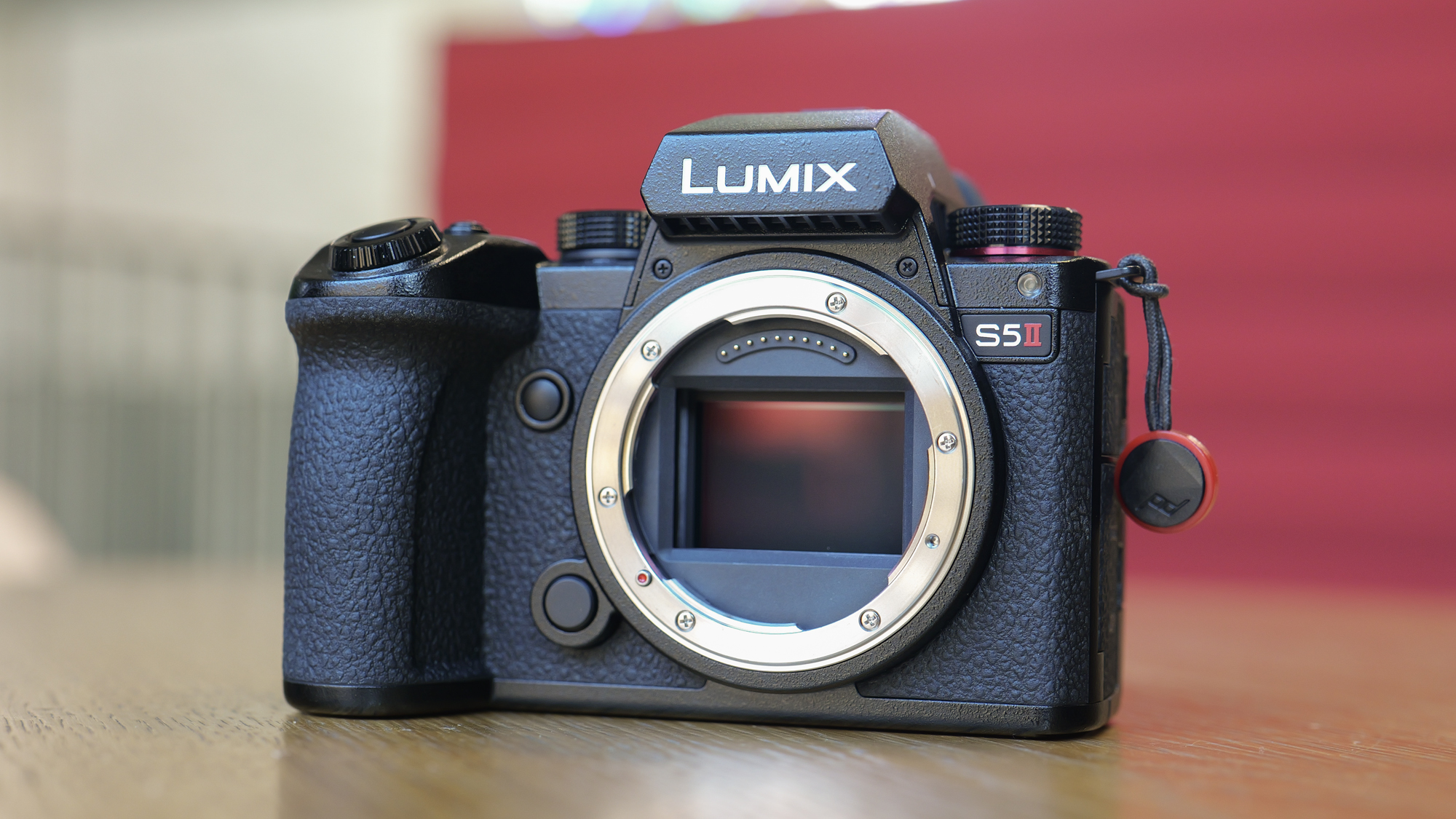
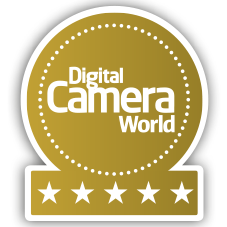
Specifications
Reasons to buy
Reasons to avoid
✅ You want the best of both: With open-gate 6K 30p, 4:2:2 10-bit, LongGOP, SSD recording,, and 24MP stills this is a content creator's dream!
✅ You rely on stabilization: When you don't have a gimbal, the incredible in-body image stabilization (up to 6.5 stops) outperforms even higher-specced competition.
❌ You rely on a tally light: A rare miss for the otherwise excellent video features is the lack of a tally light, to indicate when the camera is recording.
Mirrorless cameras are the most popular choice for serious video shooting – offering you an interchangeable lens system that means you can pick the right lens for what you are shooting.
The Panasonic Lumix S5 II is our top pick for videographers - but its full-frame sensor make it a great camera for shooting stills too. It builds on the original Lumix S5’s tough compact frame, class-leading 5-axis in-body image stabilization, and excellent color science.
In my review, the most significant new addition to this camera is the Phase Hybrid autofocus system that combines PDAF with Contrast Detect AF to provide 779-area metering. The S5 series was always a favorite, but this newer model is now much, much better at getting the focus right on low-light and moving subjects.
We were also impressed that the Lumix S5 II gives you truly unlimited 4K/60p 4:2:2 10-bit recording internally - and FHD/180p for slow-motion effects- making it a highly versatile camera for content production. And at $2500/£2000, we think the Lumix S5 II is astonishingly good value for money.
Read our full Panasonic Lumix S5 II review for more details

Features | with 6K video, great image quality for photos and unlimited video record time its perfect for content creators | 5 / 5 |
Performance | Its 6K video is outstanding and its filmic stills look amazing - its certainly a brilliant hybrid camera | 4.5 / 5 |
Value | Offers great value for money in a feature packed setup | 5 / 5 |
Best for content creatives
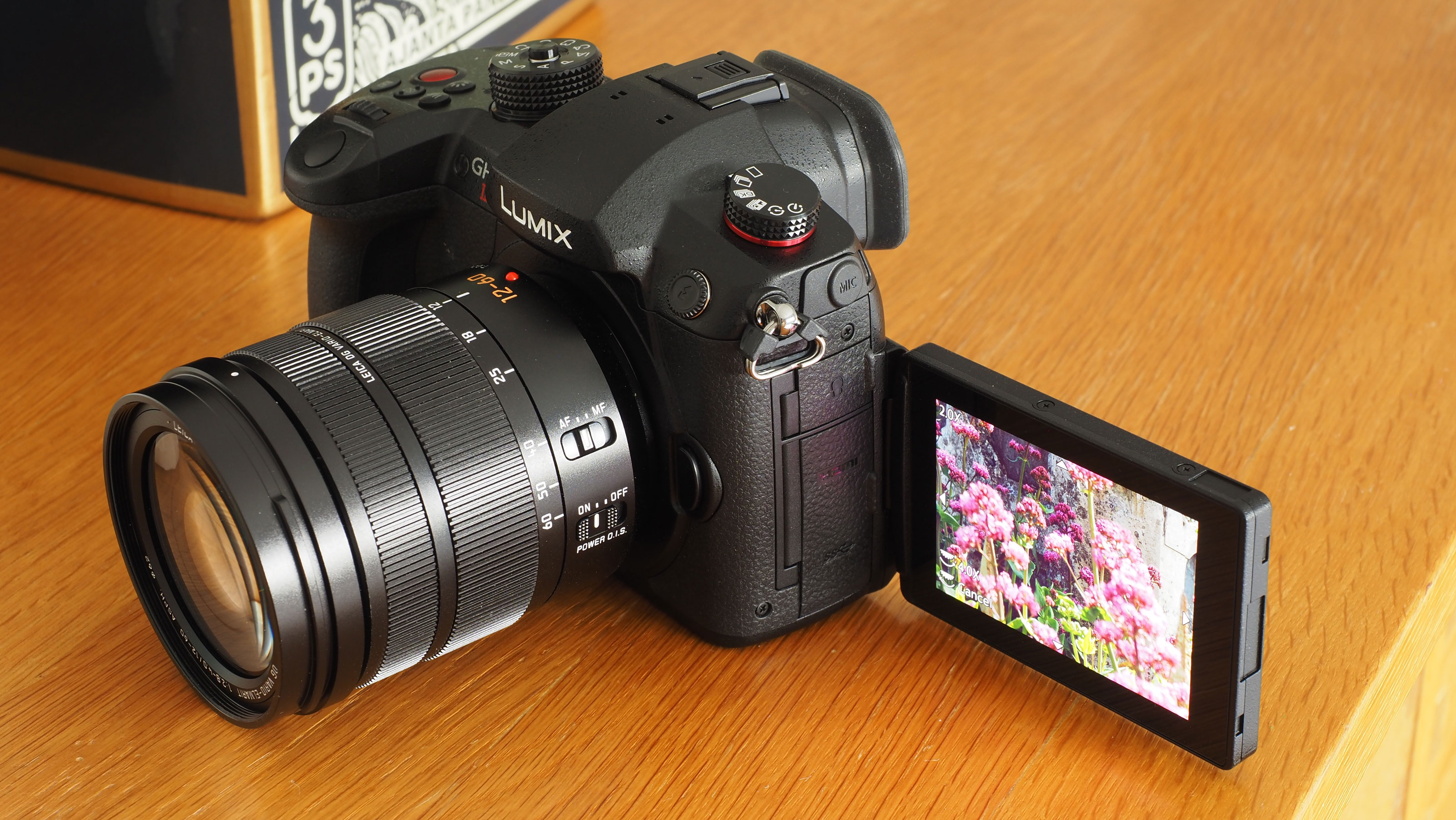
Specifications
Reasons to buy
Reasons to avoid
✅ You do a lot of handheld shooting: The image stabilization goes up to 6.5 stops (lens dependent) and delivers shake-free footage.
✅ You'll be shooting outdoors often: The GH5 II's magnesium body is resistant to splashes and dust, and freezeproof down to -10 °C (14°F) for any cold weather spells.
❌ You want BIG resolution: The 20.3MP sensor is outclassed by several options on this list and isn't the most generous for landscape or fine art images.
❌ You need dependable run and gun AF: The GH5 II's autofocus for video is effective if you stay still, but not in the same league as rival cameras with phase AF.
The clue is in the name. A Mark II version of anything is likely to be a refresh rather than a whole new camera, and it’s the same here. But while the GH5 II might appear superficially similar to its predecessor, it incorporates a large number of improvements and additions that make quite a difference when you add them together – and they are even more impressive given the price. While sequel cameras like the Lumix GH6 have since come along, the GH5 II still represents excellent value for money.
This camera dates from the era when Panasonic was sticking with its own DFD contrast-based autofocus even though rival makers have switched to faster and more reliable phase AF. Panasonic's DFD AF has steadily improved, but it still tends to hunt and lose contact with subjects – which is bad news if you are trying to film yourself.
With an articulating display that opens out to the side, it won’t be blocked by a shotgun mic mounted on the hot shoe, so you can vlog obstruction-free, and it also has a full-sized HDMI-out, for easy-to-access clean video – perfect for pairing with an Atomos Ninja V, for example. The Lumix GH5 II would be best suited to a more advanced YouTuber who can make the best use of its advanced video settings and won't be fazed by its quirky AF.
Read our full Panasonic Lumix GH5 II review for more details
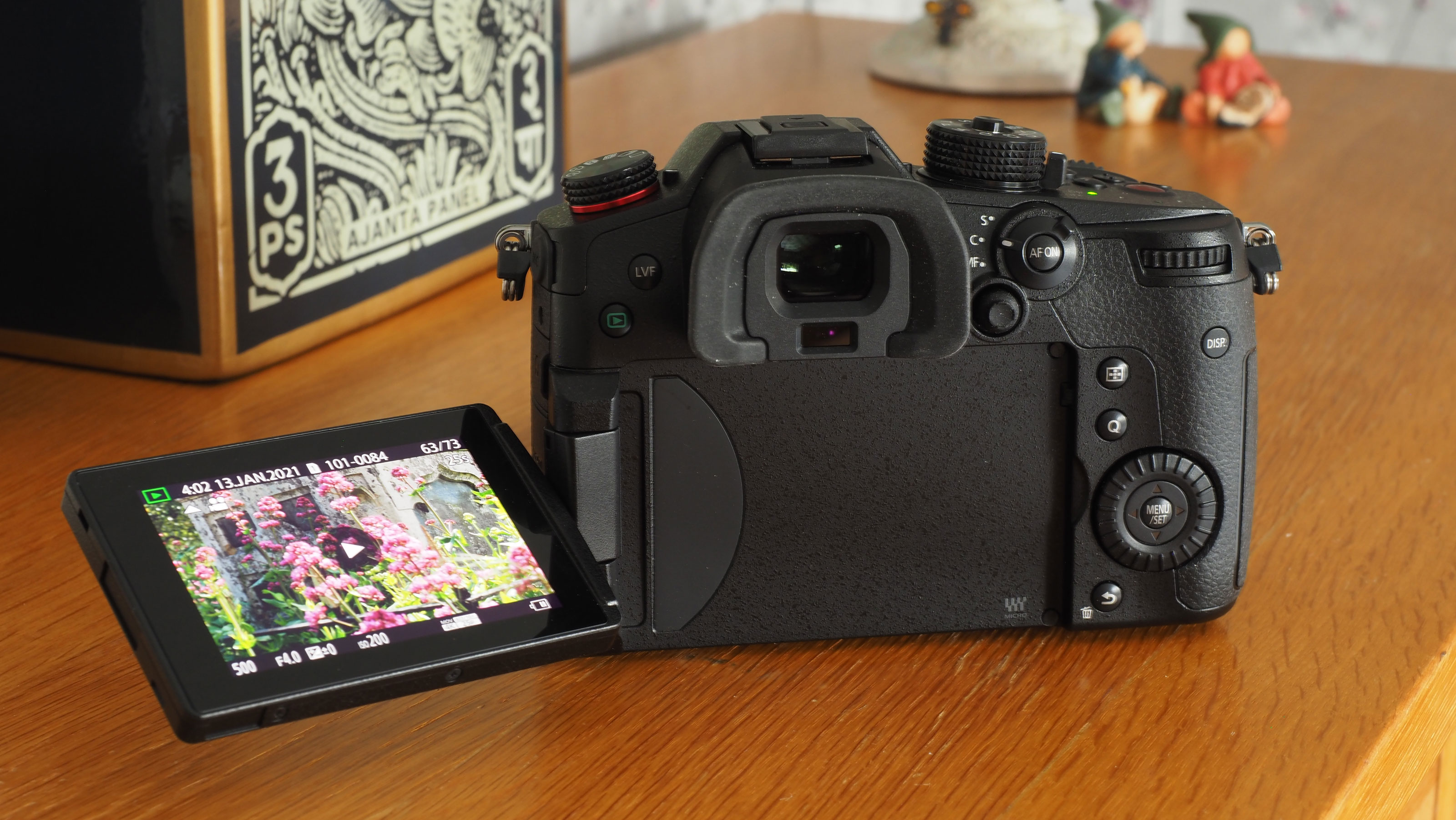
Features | 4K video and 20MP stills offers a great output for many applications for YouTube | 4 / 5 |
Performance | For Micro Four Thirds this is a good as it gets, solid video performance handheld and great photos too | 4. / 5 |
Value | Good value considering its specs | 4 / 5 |
Best for YouTube Shorts
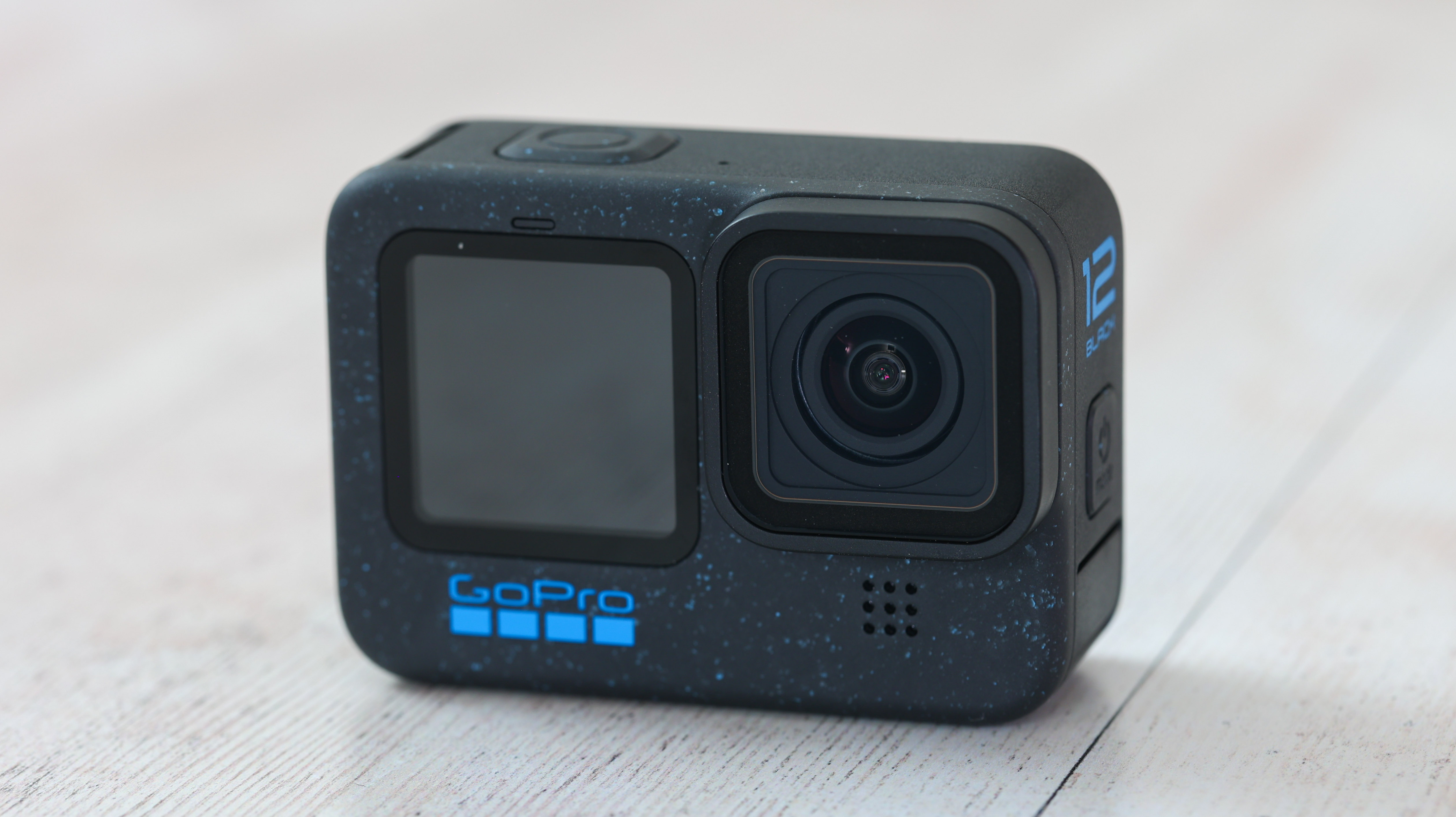

Specifications
Reasons to buy
Reasons to avoid
✅ You share across platforms: If you edit the same clip across platforms the 8:7 sensor will help you
✅ You want to record your speed: This is the last GoPro with built-in GPS, a great feature for recording your movement
❌ You want external microphones: GoPro will need you to buy an external media mod to connect a microphone
❌ You want to shoot in low light: GoPro cameras don't love working in lower lighting.
The Hero 12 Black is the latest in GoPro's supremely popular line of action cameras. For YouTubers, it's an excellent choice for a number of reasons – especially for those who want to create content for YouTube's vertical video service (a.k.a. its TikTok clone) YouTube Shorts. This is because of the 8:7 ratio sensor, introduced in the Hero 11, which allows for lossless cropping in all different aspect ratios.
The Hero 12 Black captures 5.3K at 60fps, 4K at 120fps, or 2.7K at 240fps if you're looking for super slow motion shots. GoPro's HyperSmooth stabilization is better than ever before, the updated hardware and software make it even more powerful and video quality is very good, except for in dimly lit environments.
Low-light performance isn't much better than it's ever been, though the Hero 12 Black does introduce a few new features, including support for Bluetooth microphones and headphones. You can now shoot HDR video and shoot in a flat Log profile for maximum dynamic range and latitude when it comes to colour grading. It's not a big jump over the Hero 11 Black – but for serious content creators, it's worth the investment.
Read our full GoPro Hero 12 Black review for more.
GoPro Subscription explained: what you get, and is it worth it
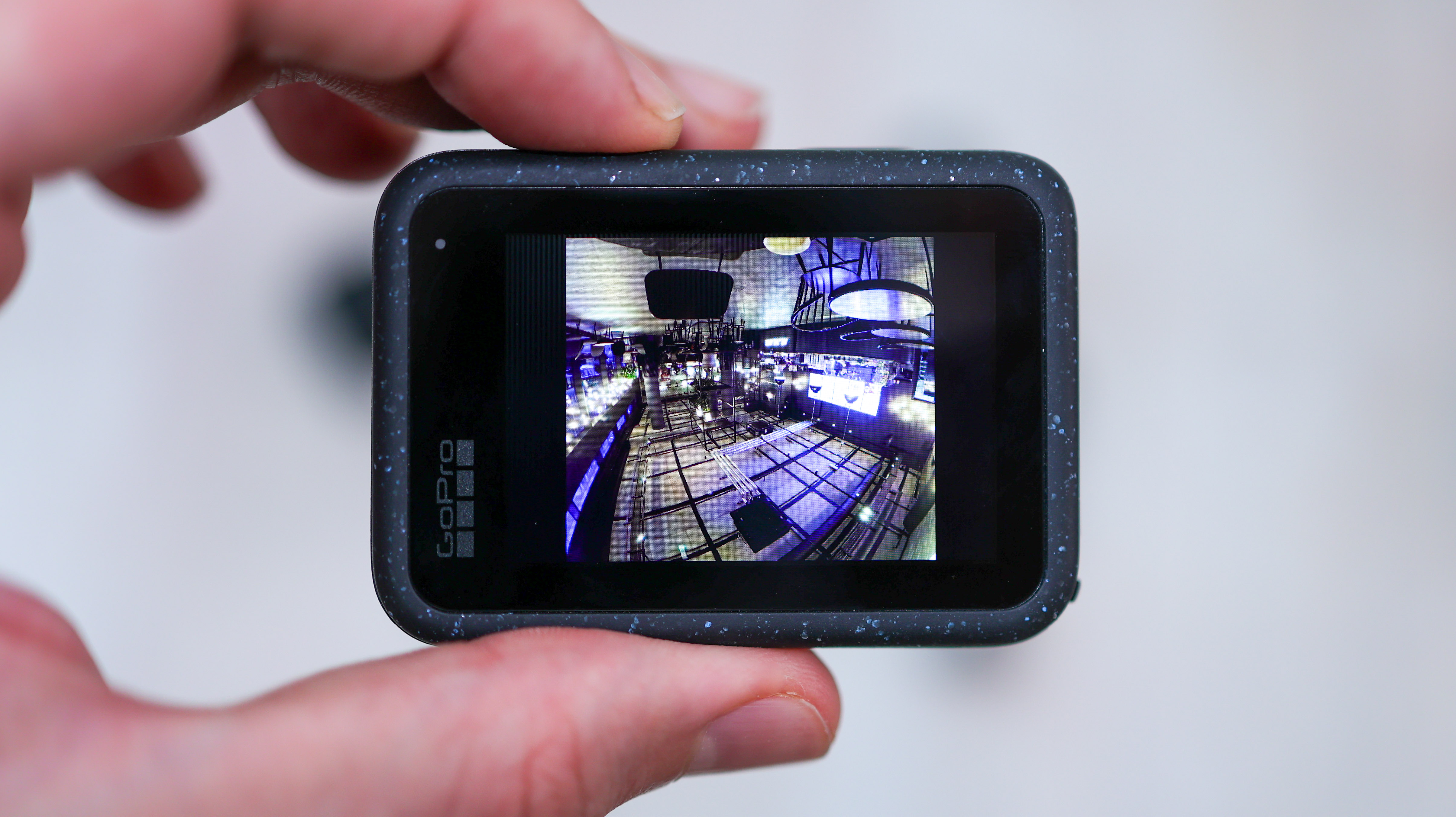
Features | 5.6K video, dual-channel audio and the ability to fit in your pocket makes a GoPro a solid contender for YouTube | 5 / 5 |
Performance | The ability so share one video clip across many social media platforms is useful and its video quality excellent in daylight, but lacks in low-light situations | 4. / 5 |
Value | Price is fantastic for its features, size and portability | 5 / 5 |
Best for travel
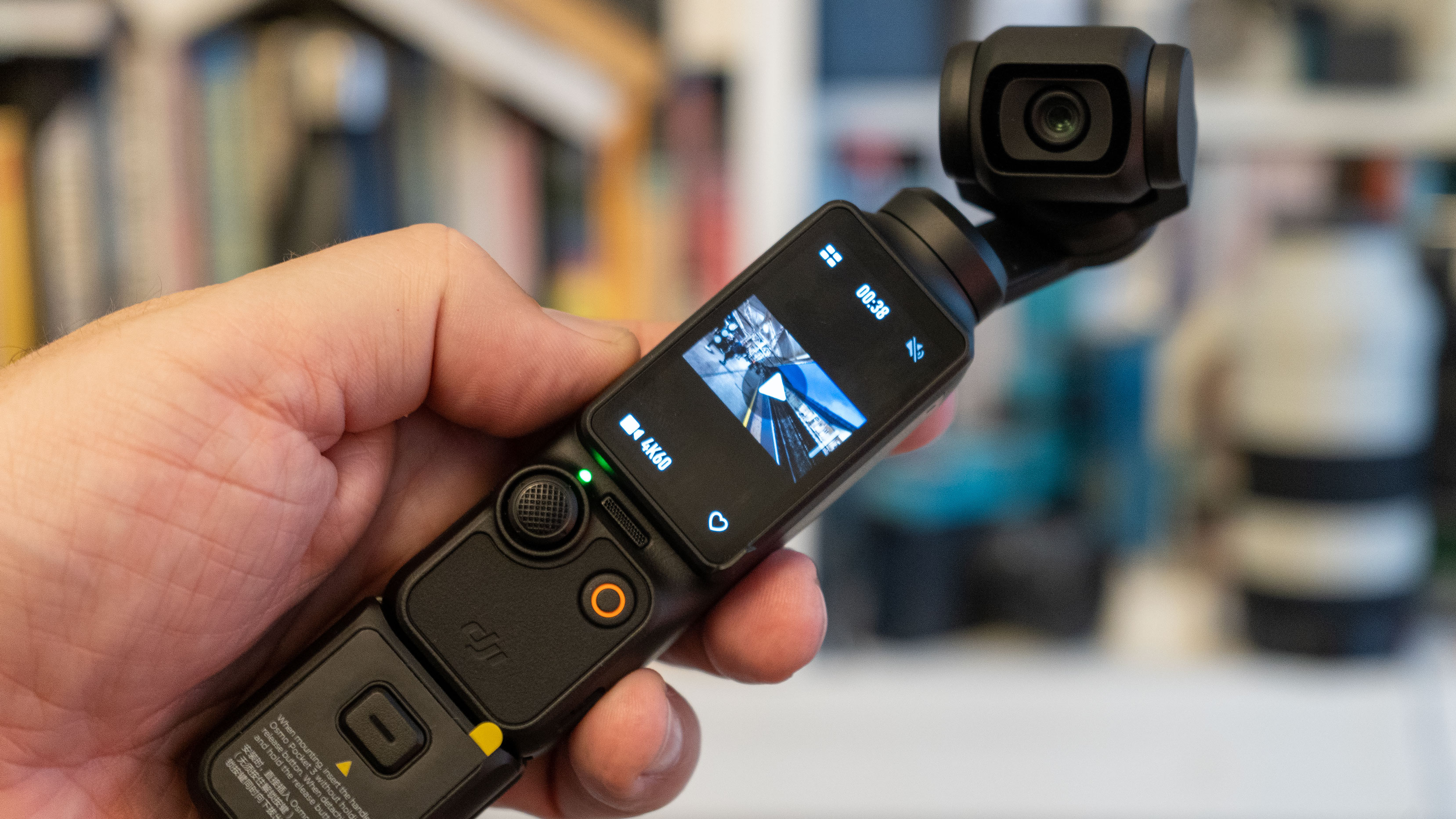
Specifications
Reasons to buy
Reasons to avoid
✅ You need to vlog: Stable shots and mic compatibility are well covered here.
✅ You want a stable shot: The gimbal offers possibilities software stabilization can't manage.
❌ You want rugged: It's tough for what it is, but it won't survive as much as a true action camera
DJI's Pocket cameras have long been popular among YouTubers for their ability to capture smooth moving footage while used handheld. They're built around an integrated gimbal that compensates for camera movement – essentially the same unit DJI uses in its drones. However, with DJI's ActiveTrack technology built in, cameras like the Osmo Pocket 3 can also intelligently follow subjects and keep them in frame.
The Osmo Pocket 3 features a raft of updates compared to the previous Pocket 2, and more than justifies the price hike. One of the key additions is a larger 1-inch sensor, which means it performs much better in a range of lighting conditions. It also has a much bigger LCD monitor – a 2-inch screen that smoothly rotates from horizontal to vertical orientation as needed. It's so much easier to see what you're doing than it was on the smaller screen in previous versions of this camera, not to mention making use of the touchscreen functionality.
The camera isn't as small or as resilient as the 'Pocket' designation implies – you'll want to be more careful with it than you would with, say, a GoPro. However, it's unquestionably the best iteration of the form we've seen yet, and can be brilliantly accessorised with wireless mics for improved audio.
Read our full DJI Osmo Pocket 3 review for more details
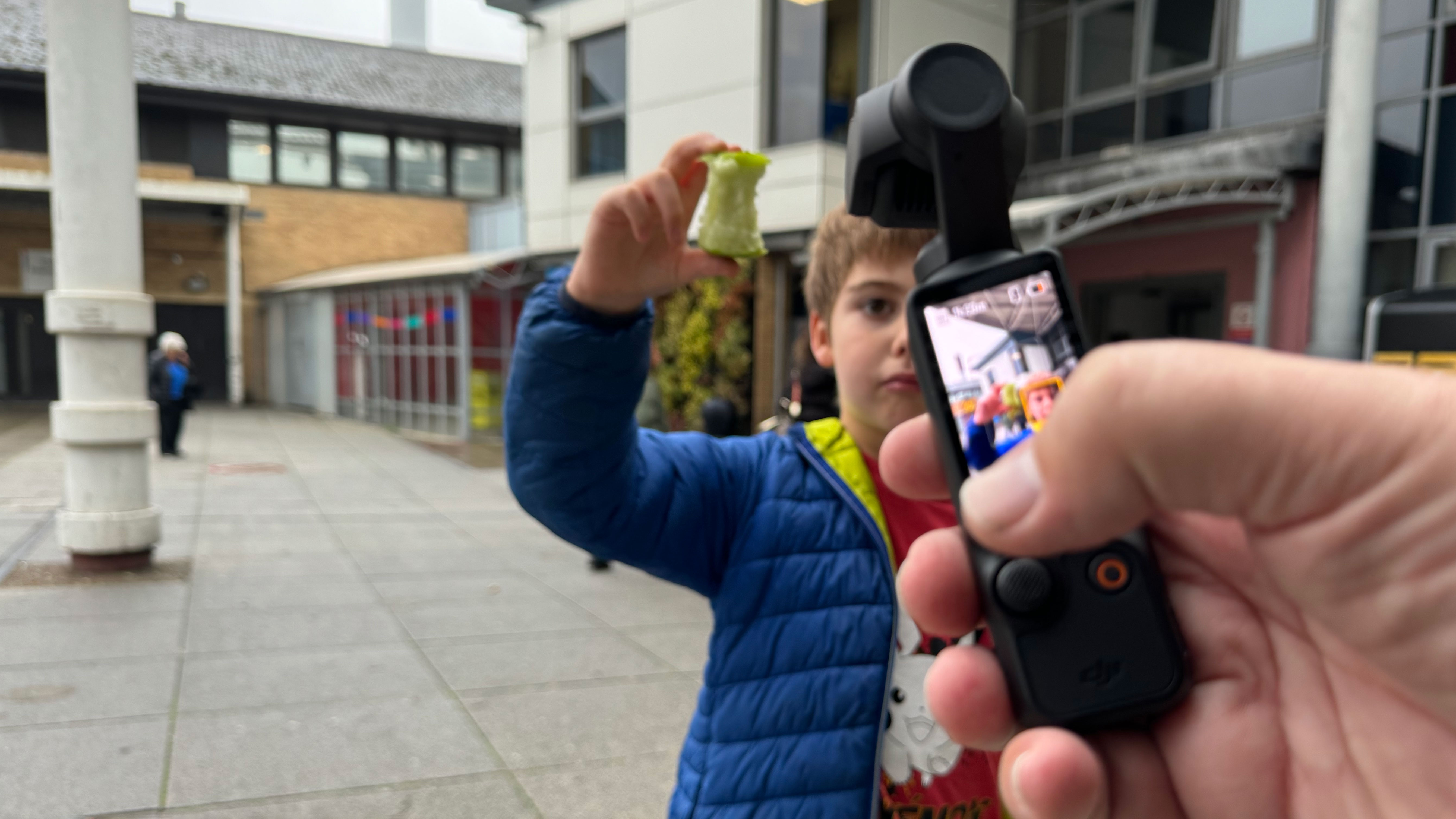
Features | 4K video, stabilized footage, external mic comparability makes this a popular option for many vloggers | 4 / 5 |
Performance | Excellent performance across the board, but can bit more fragile than a action camera | 4. / 5 |
Value | It's a little pricey, but offers a lot of features out the box | 5 / 5 |
Best for streaming
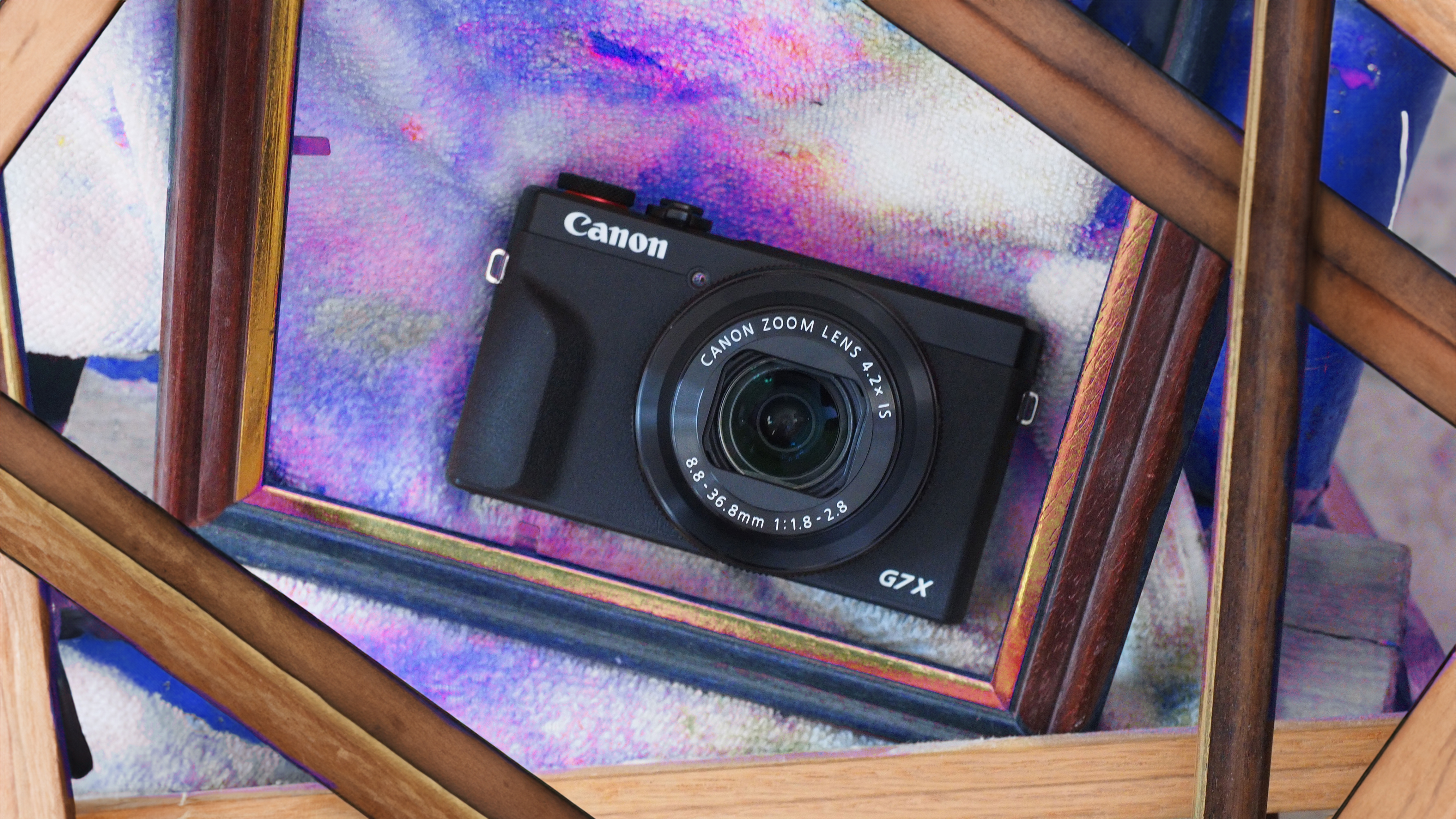
Specifications
Reasons to buy
Reasons to avoid
✅ You want 4K: with its 4K30p this is the perfect camera for those wanting 4K streaming
✅ You want zoom options: with its built-in 24-100mm lens you can always make sure you;re framed correctly
❌You want to change lenses: while its built-in zoom lens offers a vast zoom range, you can't change it for a faster one
❌ On a budget: for a compact, it is a bit pricey, but it can be used for other things than just streaming
One of the biggest bugbears vloggers and video makers have with Canon is the crop factor when shooting 4K on many of its cameras, but the G7 X Mark III bucks the trend – thank goodness. This high-end compact packs a similar body and an identical lens to the G7 X Mark II, but includes a new sensor and no 4K crop. It was also the first camera of its kind with a microphone input – vital if you want clean audio, not to mention the ability to Livestream straight to YouTube.
This means that even if you’ve got an expensive cinema camera if you also have a G7 X Mark III you can create a fuss-free live setup without any expensive capture cards and a PC. With its flip-out screen, the G7 X III also gives vloggers a clear view of themselves when they shoot, and thanks to its 20.1MP 1-inch stacked CMOS sensor and Digic 8 processor it’s also able to capture great stills, so your custom thumbnails can pop nicely.
Read our full Canon PowerShot G7 X Mark III review for more details
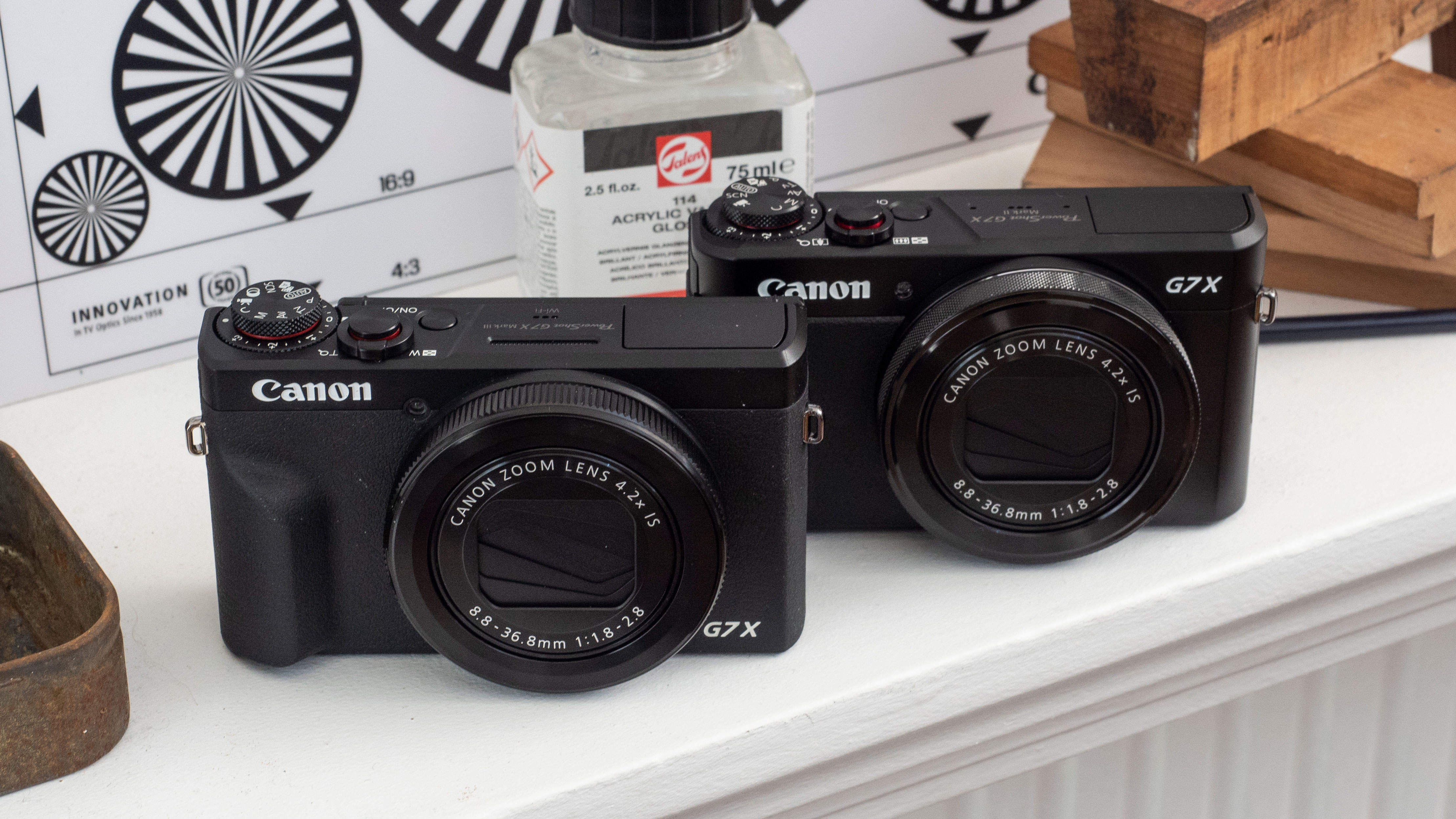
Features | 4k video, live streaming and versatile zoom range makes it a great companion for vloggers | 4.5 / 5 |
Performance | It performs well across the board and its zoom range makes shooting talking heads to environment shots a breeze | 4. / 5 |
Value | More expensive than other options, but this is a all-in-one package that will suit many | 4 / 5 |
Best 360 camera
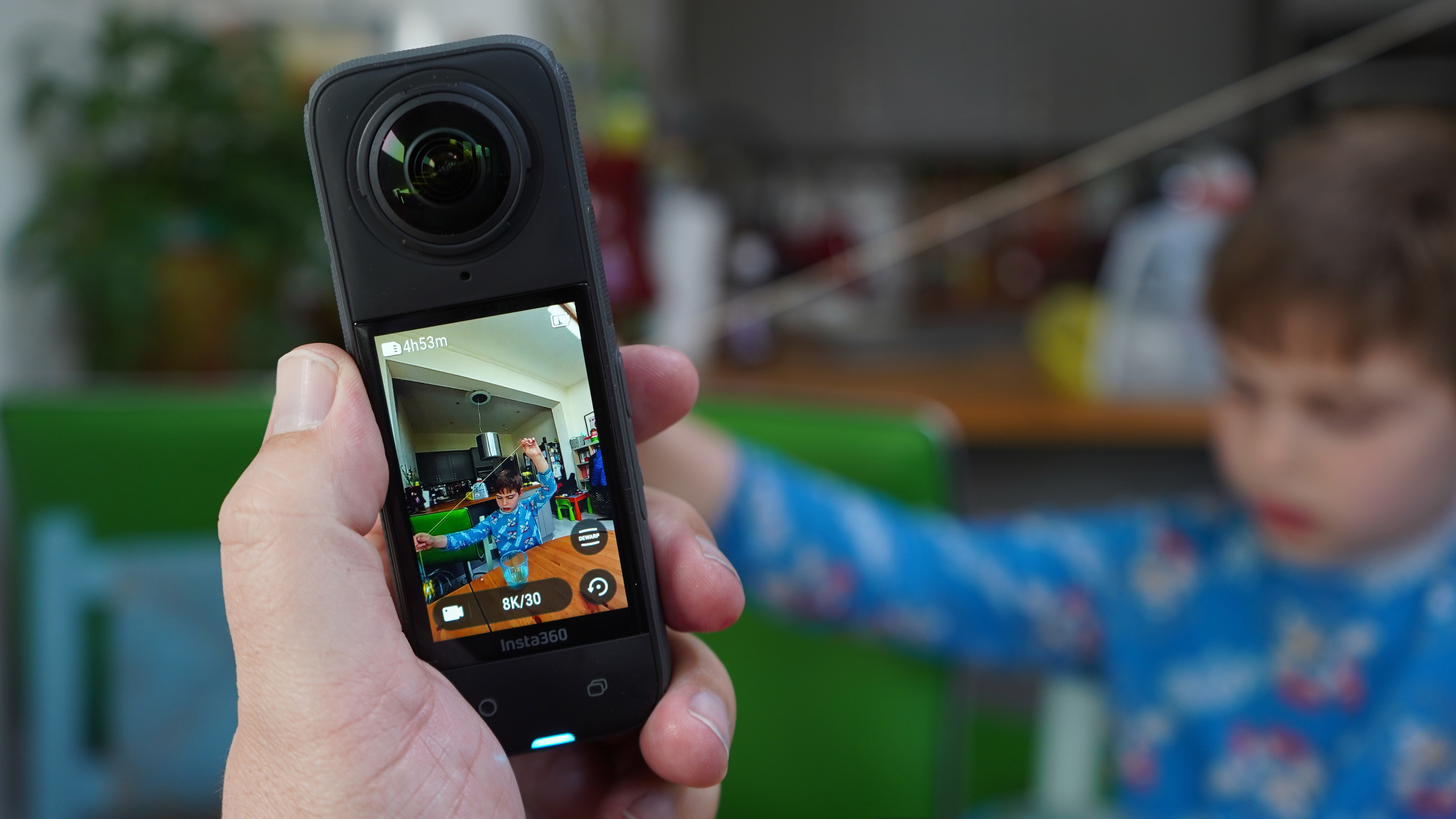

Specifications
Reasons to buy
Reasons to avoid
✅ You want sharp 360 video: The 8K makes for much more flexibility than most other
✅ You want a great all-rounder: The camera is powerful enough to turn itself to nearly any task, including one-camera action camera modes.
❌ You are on a tight budget: There are cheaper options (including the previous generation X3) which still provide a lot of quality.
❌ You want top-notch low-light: With 1/2-inch sensors the HDR is good, but low-light performance is only so-so.
When I tried this camera, I knew immediately it would find itself at the top of this buyer's guide. It's a great choice for people like me (owners of the X3 looking for more resolution and processor power) and an equally sensible choice for anyone getting into 360-degree photography for the first time, whether their goals are serious content creation or fun.
A couple of things set the camera apart. A big one is the Insta360 software, which is comfortably ahead of the offerings from others at the moment. As well as an excellent phone app (iOS/Android), there is an Insta360 Studio for Mac/PC and plugins for Premiere and Final Cut Pro so creating content can happen almost immediately for social, or in careful detail later. The AI subject tracking is excellent too, saving hours in manual keyframing compared to GoPro's offering.
That, though, is available with the X3 too. The headline feature here is the 8K resolution, and the processing power which delivers it. The boost makes for significantly better quality, especially when zooming into video in the edit. It also provides a lot of other upgraded resolutions, like single action camera mode at the crucial 4K60fps threshold, as well as features like bullet time now at 5.7k/120fps.
Other refinements exist too, like the removable lens covers which make the device extra rugged and the ability to connect microphones. All seem to result from a company listening to its customers and making improvements over generations. Whenever improvements suit the users like that things are good (and a word to the wise – this camera's 5-star review was earned in 2024, not 2020).
Read our review of the Insta360 X4 for more details
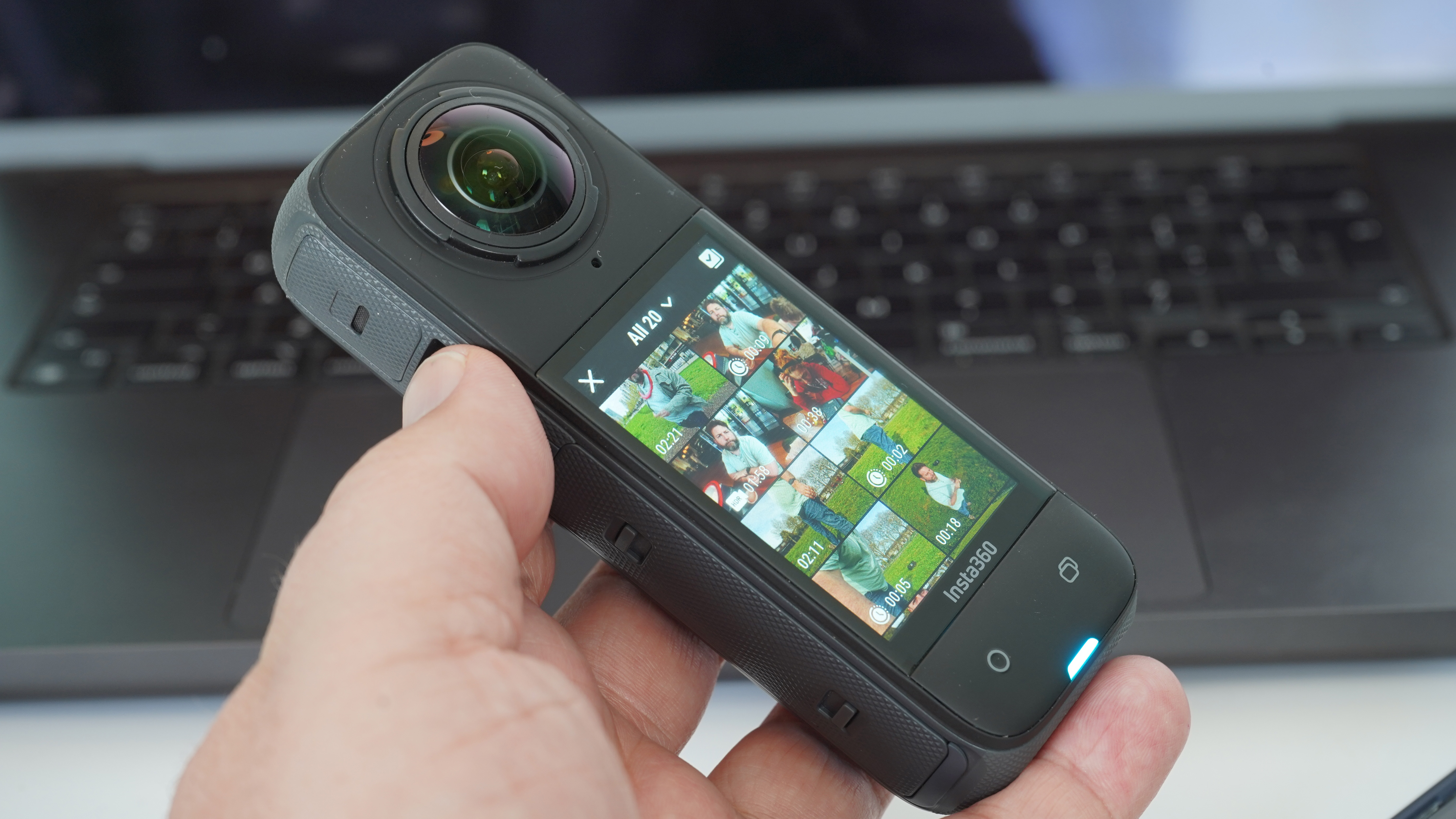
Features | 8K video, excellent stitching for 360 photos and can shoot "normal" 4K video too | 5 / 5 |
Performance | It delivers stunning results in all shooting modes, but cant lack clarity in low-light environments | 4. / 5 |
Value | Good for 8K, but pricey compared to others | 4 / 5 |
How to choose a camera for YouTube
Choosing a camera for YouTube isn’t just about picking the most expensive or high-end model—it’s about finding the right tool for your specific content. The best camera for you depends on what you plan to film.
If your channel is packed with fast-paced action and adventure, an action camera is a great choice. Modern action cams capture stunning high-quality footage, and if you’re looking for a unique perspective, a 360-degree camera could be worth considering.
A mirrorless camera is the way to go for a more controlled, cinematic approach. These offer cutting-edge video technology, superior image quality, and the flexibility of interchangeable lenses, allowing you to adapt to different shooting conditions.
Another option is a compact camera with a built-in lens. While not as versatile as a mirrorless setup, compact cameras are more affordable, easier to use, and significantly lighter—ideal for creators who want a simple, travel-friendly solution.
Thinking about live streaming? Not all cameras support streaming straight out of the box. While our guide features a few that do, check out our dedicated list of the best streaming cameras for more
How we test cameras
We test cameras both in real-world shooting scenarios and, for DSLRs and mirrorless cameras, in carefully controlled lab conditions. Our lab tests measure resolution, dynamic range, and signal-to-noise ratio. Resolution is measured using ISO resolution charts, dynamic range is measured using DxO Analyzer test equipment and DxO Analyzer is also used for noise analysis across the camera's ISO range. We use both real-world testing and lab results to inform our comments in buying guides.
FAQs
Do you need a professional camera for YouTube?
The short answer? No, you don’t need a professional camera to create great YouTube content! While high-end cameras in skilled hands can produce superior results, a standard camera—or even a smartphone—can deliver quality that’s more than good enough for YouTube. Many of the cameras in this guide are ideal for beginners and intermediate users alike.
You don’t need the latest 6K or 8K resolution, either. For now, shooting in at least 4K is a solid choice, though Full HD can still work just fine. What matters more is capturing clear, high-quality audio. Whether you use a plug-in microphone, a wireless setup, or a camera with an advanced built-in mic—like Sony’s ZV-1 vlogging compact—good audio will make a bigger difference than extra pixels.
Are phone cameras good for YouTube?
It depends on the phone—but in many cases, yes! Smartphone cameras have improved dramatically in recent years, and most flagship models now offer 4K video recording as a standard feature (though frame rates can vary). If you’re considering using your phone for YouTube, check out our dedicated guide to the best phones for video to find the top options.
Get the Digital Camera World Newsletter
The best camera deals, reviews, product advice, and unmissable photography news, direct to your inbox!

For nearly two decades Sebastian's work has been published internationally. Originally specializing in Equestrianism, his visuals have been used by the leading names in the equestrian industry such as The Fédération Equestre Internationale (FEI), The Jockey Club, Horse & Hound, and many more for various advertising campaigns, books, and pre/post-event highlights.
He is a Fellow of the Royal Society of Arts, holds a Foundation Degree in Equitation Science, and holds a Master of Arts in Publishing. He is a member of Nikon NPS and has been a Nikon user since his film days using a Nikon F5. He saw the digital transition with Nikon's D series cameras and is still, to this day, the youngest member to be elected into BEWA, the British Equestrian Writers' Association.
He is familiar with and shows great interest in 35mm, medium, and large-format photography, using products by Leica, Phase One, Hasselblad, Alpa, and Sinar. Sebastian has also used many cinema cameras from Sony, RED, ARRI, and everything in between. He now spends his spare time using his trusted Leica M-E or Leica M2, shooting Street/Documentary photography as he sees it, usually in Black and White.
